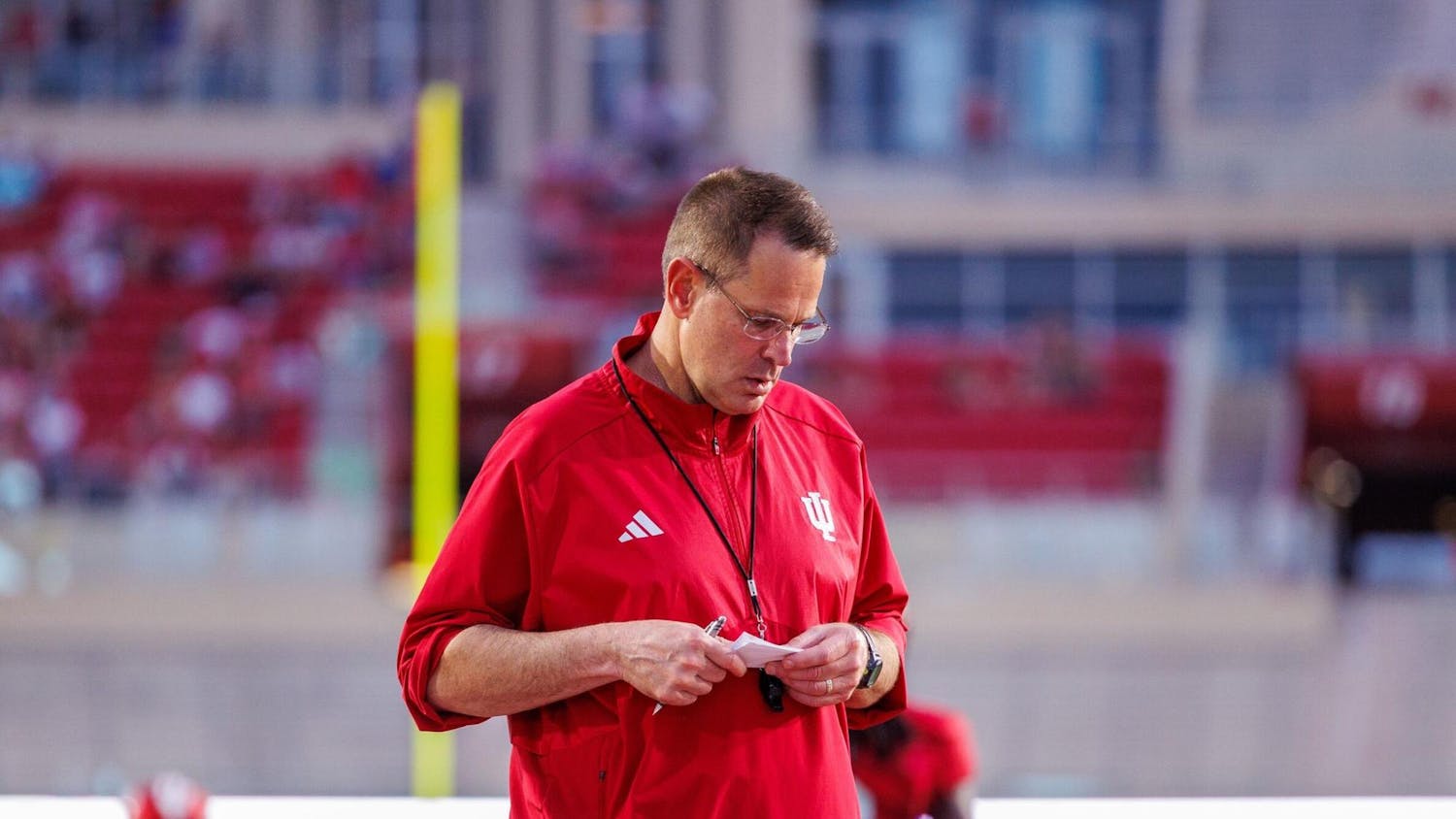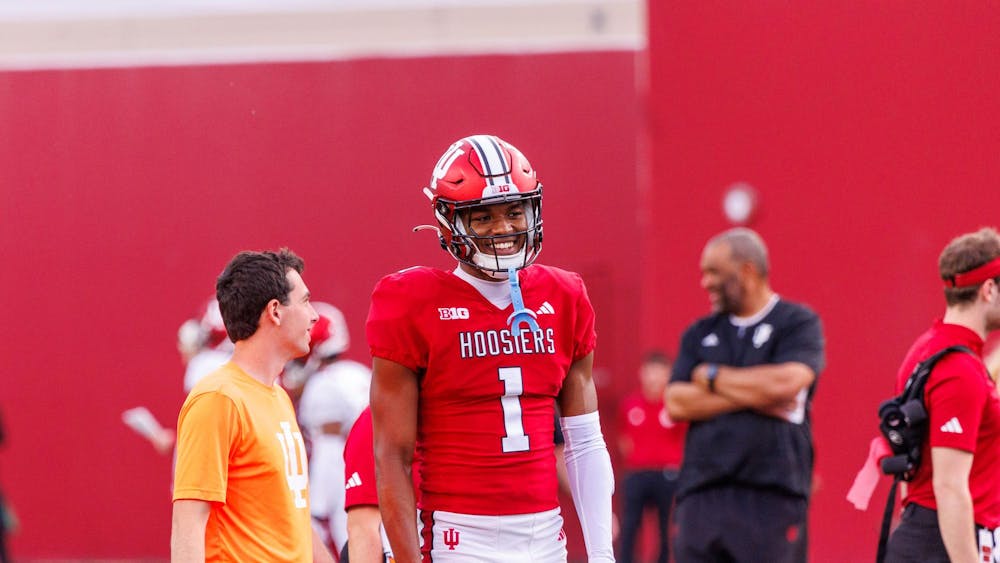Senior Adam Gutwein's college experiences have taken him coast to coast -- and then down to 130 feet underwater. He's a scuba diver earning degrees in underwater science and anthropology -- and though Bloomington's landlocked campus seems like an unlikely location for an Underwater Science program, an interdepartmental effort and the passion of one man have given Gutwein the chance to be involved in one of the nation's top programs. \nThe vision behind IU's Underwater Science program is that of Director Charles Beeker. An archaeologist by training, Beeker joined IU's faculty in the mid-1980s. He expanded IU's basic scuba classes into a collaborative research-focused underwater science program -- one that now compares to similar programs at schools nearer the ocean, like University of California-Berkeley and the University of Florida. \nOnce students receive diving training, they can participate in any number of ongoing projects through the Underwater Science program. To date, students have been involved in building underwater parks, conserving coral reefs and excavating shipwrecks. Since January, Beeker has taken students on dives in northern California, the Dominican Republic and the Florida Keys. \n"Have program, will travel," he said. "People think we're always on vacation, but it's not that way at all."\nA large part of the work involves conservation, research and finding ways for projects to benefit the public, Beeker said.\nReaching into a small red Rubbermaid cooler, he lifts out a plastic bag smelling of seawater. Inside is an artifact from Beeker's most recent dive: a chipped ceramic plate scrawled with Chinese characters. The hand-painted plate is part of a selection of 180 artifacts taken from the excavation of the Frolic, an 1850s clipper. The Frolic sank en route from Hong Kong before reaching its port in San Francisco. \nIn addition to the plate and other artifacts, soon Beeker's new lab space in the basement of the School of Health, Physical Education and Recreation will have an 1,100-pound cannon from the same site to preserve and study.\nJust like in land excavations, each artifact is carefully removed, numbered and placed in a bag for further examination. But this plate's plastic-bag home comes with a buffer of salt water -- and it needs to stay immersed until it can be preserved.\nBecause porcelain is porous, salt from the seawater seeps deep down into the plate. If the plate is exposed to air and allowed to dry out before the salt is removed, the salt will crystallize within the plate and cause damage -- and in the case of the cannon, exposure to air will cause rust. \nIn the next few weeks, the Frolic's artifacts will be placed in a tank containing fresh water and the salt removed through the process of electrolysis. Only then, Beeker said, will the artifacts be ready for student examination outside of the water.\nToday, Beeker's newest students are starting at the beginning -- learning to scuba dive. And with a long list of classes and skills from which students can choose, IU's Underwater Science program is more than just swimming and scuba lessons.\n"We have a lot of collaboration," Beeker emphasized. \nBeginning underwater scientists can assemble their own coursework based on their interests. For example, students can take a tropical biology class from the biology department's curriculum or coral reef ecology from the School of Public and Environmental Affairs.\n"The Underwater Science program is what you make of it," Beeker said. "Everybody thinks you have to be an archaeologist, but that's not true."\nStudents are trained to work on research projects as well as taught how to get involved in state and federal programs. Underwater projects require a team of people and a variety of specialized knowledge to succeed, Beeker said.\nMost students involved in the program opt for the 24-credit hour Underwater Research Management Certificate, but some also complete the Underwater Archaeology degree, offered through the Individualized Major Program in collaboration with the Department of Archaeology.\n"The certificate is more than a minor but less than a degree," Beeker said. "And that's the beauty of it. A student doesn't have to switch majors to add a skill set like underwater research."\nSean Bradley, a junior working toward a degree in informatics, is a prime example. He spent last summer in northern California helping with the Frolic excavation. His main task was not diving, but information management.\nBradley quickly learned how to adapt to the archaeologists and their lingo. Coming from informatics, he "had a lot of numbers, and they had a lot of dates." With all the documentation, archiving and visual image work he did on the project, Bradley said he felt like a detective helping to put a story-line together.\n"It was amazing to have so much technology and potential yet be in so remote a location. It was like being in a National Geographic special," Bradley said. \nIn fact, that's pretty close. Beeker and crew can still be seen on the History Channel in one of last year's episodes of "Deep Sea Detectives."\nThough Bradley only worked temporarily with the program participants, others, like Gutwein, are fully hooked on this underwater hands-on classroom. Gutwein switched majors after getting a taste of the program -- and Beeker's passion for underwater archaeology -- and plans to dive for the rest of his life. \n"I never thought I could have a job working with underwater resources, but it opens up so many opportunities," Gutwein said.\n-- Contact staff writer Erika Biga Lee at ebiga@indiana.edu .
deep water detectives
IU's Underwater Science Program offers science students deep-sea learning, travel
Get stories like this in your inbox
Subscribe





